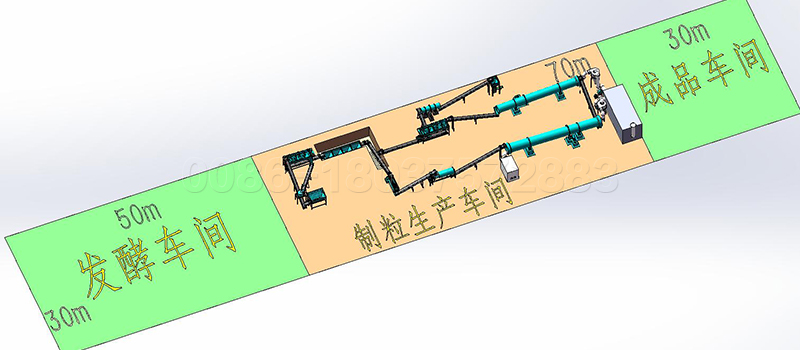The biological fertilizer project is made of organic wastes such as crop straw (such as straw and wheat straw), edible fungus nutritional residue, inorganic minerals (salts such as salt mine and phosphate mine), animal manure (chicken manure and cow manure) as raw materials for bio fertilizer production, and then mixed with a certain amount of microbial flora, accumulated, high-temperature fermentation, decomposition, sterilization, amino acids, nitrogen and phosphorus, Potassium and other nutrients needed by crops are nutrients for crops to absorb.

In short, it is divided into the following steps:
Pretreatment: after the compost material is transported to the storage yard, it is weighed by a balance and sent to the mixing and mixing device. It is mixed with the production and domestic organic wastewater in the plant, and compound bacteria are added.
The fertilizer moisture and carbon nitrogen ratio are roughly adjusted according to the raw material composition. After mixing, proceed to the next step.
One time fermentation: the mixed raw materials are sent to the fermentation tank by the loader and stacked into a fermentation pile. The fan is used for forced ventilation and oxygen supply from the bottom of the fermentation tank. At the same time, the compost dumper is used for 2 days.
Add water (mainly produced in the factory, mainly domestic organic wastewater) and nutrients, control the fermentation temperature at 50 ℃ ~ 65 ℃, aerobic fermentation. The first fermentation cycle of the project is 8 days. After each pool of raw materials and one pool of daily semi-finished products, the fermentation semi-finished products are discharged and ready to enter the next process.
Post treatment: the finished compost is further screened, and the screened materials are treated according to the water content. After granulation, the particles are sent to the dryer heated by biogas in the biogas digester for drying, medium and trace elements are added in proportion, then mixed into finished products, packaged and stored in the production of bio organic fertilizer.
The process has been sold. The screened materials are returned to the crushing process for reuse.
More detailed info, go to https://fertilizerplantequiment.com/how-much-does-an-organic-fertilizer-plant-cost/

